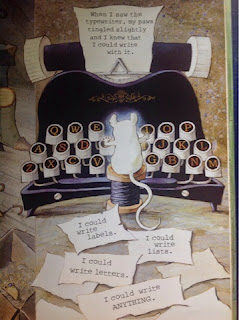Age, as one realizes with age, is relative. My age used to seem old when I observed my aunts and uncles. Now in their early 70s, they do not seem old to me. Imagine, though, really going back in time to be an age you have already lived. But with that age, you have been able to keep the wisdom and knowledge gleaned from the actual experiences of your life.
Such is the case of eleven-year-old Ellie's grandfather in Jennifer Holm's latest book The Fourteenth Goldfish. When her mother comes home one day with a rather odd teenage boy (who has the teenage attitude and appetite), she soon discovers him to be her grandfather Melvin. Geeky, judgemental, brilliant, sassy, and always hungry, Melvin has become young in body through experiments done with a jellyfish. Naming the species T. Melvinus, he has taken a dose and gotten into some trouble. His only wish is to rescue the remaining sample from his refrigerator in the lab.
Enter Ellie, who has been abandoned by her longtime friend for the popular crowd. To her credit, she sits with her cantankerous and strangely dressed grandfather/so-called-cousin at lunch and accompanies him on his excursions. She listens to his research ideas. She enlists the help of a boy named Raj who becomes her friend. And she begins to question, as she learns from Melvin about other scientists and their mistakes, whether it is right to stay the same age forever. She asks him, "Is growing up, growing old - life - is it all so terrible?"
Recently, I listened to a TED talk by author Mac Barnett in which he discusses how children are able to suspend their disbelief in the unlikely, buying in to the scenarios and possibilities in the books they read. That was me with The Fourteenth Goldfish. Melvin's research and transformation was believable somehow. I contemplated with Ellie: "Who's going to be the grown-up?"
The realistic dialogue and situations, the wonderful connection to Our Town, a fabulous title story, and an opening quote from Galileo added to my appreciation of this thoughtful science fiction book. Reading it aloud to fourth graders later this year will, no doubt, provide me with insights from readers who are still deciding about what it means to be old.







































